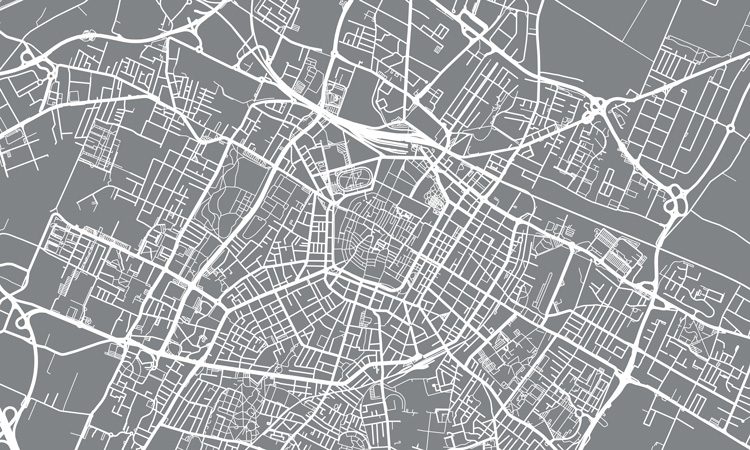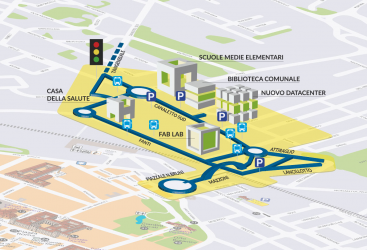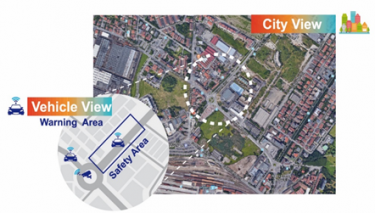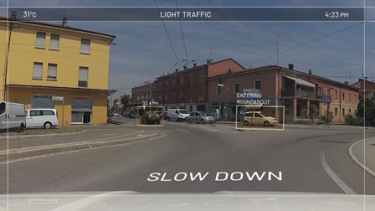Efficient distribution of big data analytics for urban mobility applications
- Like
- Digg
- Del
- Tumblr
- VKontakte
- Buffer
- Love This
- Odnoklassniki
- Meneame
- Blogger
- Amazon
- Yahoo Mail
- Gmail
- AOL
- Newsvine
- HackerNews
- Evernote
- MySpace
- Mail.ru
- Viadeo
- Line
- Comments
- Yummly
- SMS
- Viber
- Telegram
- Subscribe
- Skype
- Facebook Messenger
- Kakao
- LiveJournal
- Yammer
- Edgar
- Fintel
- Mix
- Instapaper
- Copy Link
Posted: 13 September 2019 | Eduardo Quiñones - Barcelona Supercomputing Center (BSC) | No comments yet
Eduardo Quiñones, Senior Researcher at the Barcelona Supercomputing Center and CLASS project coordinator, explains how the European project CLASS conceives a safer and smarter urban mobility environment.


Can you imagine a city where data is shared between city and cars in real time to implement intelligent traffic management and advanced driver assistance systems? This is the plan of the European H2020 project CLASS , which is working towards sustainable, efficient and safe mobility applications in future smart cities.
With total funding of €3.9 million, the CLASS project (edge and CLoud computation: A highly distributed Software for big data analyticS) aims to develop a novel software architecture framework to design, deploy and execute distributed big data analytics with real-time constraints for smart cities, connected cars and future autonomous vehicles. The CLASS software architecture will efficiently distribute big data workloads along the compute continuum (from the edge to the cloud) in a complete and transparent way, while providing real-time guarantees. CLASS is coordinated by the Barcelona Supercomputing Center (BSC), and contributed to by the City of Modena, University of Modena and Reggio Emilia, IBM Research, Atos and Maserati.
The capabilities of the CLASS framework are being evaluated on a real smart city use case in an area of Modena (Italy). The Modena Automotive Smart Area (MASA) represents an urban laboratory that features a heavy sensor and device infrastructure to collect real-time data, and network connectivity (4.5G, LTE) that enables the exchange of massive amounts of information. Moreover, Maserati provides three prototypes of highly connected cars equipped with the necessary vehicle-to-infrastructure (V2I) connectivity, and sensors to give innovative capabilities to drivers.
Designing the smart cities of the future
A key technological challenge of smart cities is the need to process extremely large amounts of complex and geographically distributed sources of data (citizens, traffic, vehicles, city infrastructures, IoT devices, etc.), combined with the additional need to deal with this information in real time. The existing data analytics systems are designed to provide either quick and reactive responses in real time (data-in-motion analysis) or thorough and more computationally intensive feedback based on the analysis of a vast amount of information (data-at-rest analysis). Although these options have been tackled separately, combining the two provides complementary capabilities and benefits.
The pressure that the newest smart systems requiring big data analytics and real-time requirements will put on computing systems can be efficiently addressed by devising a full distributed system architecture. Combined data-in-motion and data-at-rest analytics can be performed by efficiently coordinating resources across the compute continuum, from cloud – in which data-servers are located – to data sources and edge devices that are co-located with them.
On the edge computing side, the availability of new, highly-parallel heterogeneous embedded processor architectures, (e.g. GPUs, many-core fabrics, SoC-FPGAs) may enable the processing of complex data-in-motion analytic processes with a reduced cost and power consumption within vehicles or in cabinets installed across the city. Recently proposed techniques for the real-time elaboration of heavy streams of data collected from the physical world may allow for smart edge computing paradigms that significantly reduce the pressure on communication, processing and storage capabilities at cloud and data-centre level.
On the cloud computing side, data-in-motion analysis can be completed (and enriched) with data-at-rest analysis with a more efficient usage of server resources for executing big data workloads, implying higher throughput of execution (more workloads completed per time unit) and higher resource utilisation. Combined with the smart distribution along the compute continuum envisioned by CLASS, these techniques can significantly reduce the pressure on data centres. By doing so, reliable models can be built that are periodically updated and queried using high-accuracy data analytics algorithms.
A real smart city use case in Modena
CLASS software will be evaluated in the Modena Automotive Smart Area (MASA), a real urban laboratory in the city of Modena in northern Italy, equipped with sensors and advanced connectivity. Dozens of customary and intelligent cameras have been installed to provide continuous monitoring of the area. Data is generated and collected from IoT devices and sensors located in the MASA and on the high-tech equipped Maserati cars, operated by human drivers, that can test the CLASS innovative potential in traffic management and advanced driver-assistance systems.


MASA area in Modena, Italy
The particular parameters of analysis are related to interactions between vehicles, between a vehicle and an obstacle, and between a vehicle and the city. The goal is to generate a common knowledge base between the city and the cars upon which valuable information is extracted to implement advanced smart city applications, for example, intelligent traffic management, air pollution simulation in real-time or advanced driving assistance systems.


The different area views of the smart city area
The CLASS use case is implemented in three particular applications:
Digital traffic sign
The digital traffic sign application offers the opportunity to dynamically change traffic conditions based on real-time traffic information. For example, in the case of accidents or emergency vehicles, the traffic signals will advise the best route to take. Consequently, it helps in reducing traffic congestion and CO2 emissions, and in improving the safety of road users such as pedestrians and cyclists.
Smart parking
The smart parking application collects real-time information about the available parking places in the monitored area. The detection of free parking lots will be based on the real-time elaboration of the video streams from existing and newly installed cameras connected to edge-side embedded boards.
Obstacle detection
The obstacle detection application develops the required services for warning a driver about general objects and vulnerable road users that may cross their driving path. Exploiting the support of the MASA area, city cameras and sensors information will be elaborated in real time to detect the critical situations that may endanger the safety of the driver and the road users.


Traffic sign and obstacle detection applications for the CLASS smart cars
The CLASS vision of the smart city of the future is becoming a reality through the use case applications in Modena. However, its contribution to the fields of transport research and real-life smart mobility is expected to be much wider in urban areas and smart cities of the future. The project’s efforts aim to generate several beneficial outcomes with regard to a smart urban mobility environment:
- Improving overall traffic management by 20 per cent
- Reducing pollution by 20 per cent
- Reducing the response time of emergency vehicles by 30 per cent
- Reducing the number of accidents by 30 per cent
- Reducing the time spent looking for a parking space by 40 per cent.
Biography
Eduardo Quiñones is the coordinator of the CLASS project. He is a senior researcher at the Department of Computer Science at the Barcelona Supercomputing Center (BSC). He received his Ph.D. in computer science from the Universitat Politècnica de Catalunya (UPC) in Barcelona in 2008. His research interests are strongly tied to next generation industry requirements for critical real-time systems spanning highly parallel heterogeneous processor architecture (incorporating many-core and DSP fabrics, GPUs, FPGA-based devices), parallel and distributed programming models and compiler designs. He is currently coordinating two other European H2020 projects in the same field.
Related topics
Connected & Autonomous Vehicles, Infrastructure & Urban Planning, Intelligent Transport Systems (ITS), IoT (Internet of Things)
Related cities
Modena
Related organisations
Barcelona Supercomputing Center (BSC)







